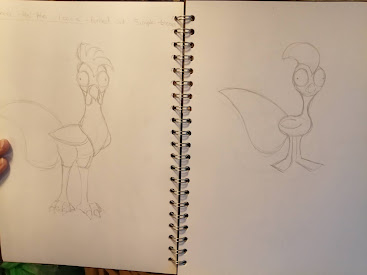Film review - Die Hard
Two of the most popular structures for films in Western media is the 3-act and the 5-act structure. Many popular western films can be broken up into either structure, and often both. For the 3-act structure, the film is broken into three acts (as the name suggests) which are: the set-up, the obstacle, and the solution. These acts usually take up a standard amount of the story as well, 25% to the set-up, 50% to the obstacle, and 25% to the solution, however, many films don’t follow this specific breakup of the time allotted to each act. The 3-act structure can then be broken up even further into the 5-act structure, where the acts are as follows: Exposition, inciting incident, Rising action, climax, falling action, Resolution, and finally denouement.
A great example of both these structures in action is ‘Die hard’. The first act of the 3-act structure is the set-up. This involves setting up the world the story is set in, where most of the story will take place and the main characters in the story. It will also serve as the turning point that will spur the protagonist on in whatever their goal is for the film. In Die Hard, we can see all of this in action, with the introduction of John McClane right at the beginning, setting him up as the protagonist, but also gently setting him up on the character arc that he will go through in the film, as it shows he is somewhat estranged from his Wife, as it is implied heavily they live in separate houses most of the time, and that John isn’t home very often. It’s implied that he puts his job as a cop above his family, shown by the fact that he didn’t and still doesn’t want to move away from his job to be with his family. We next see the set up of where the rest of the rest of the film takes place, Nakatomi plaza, a brand new, large corporate building that is still somewhat unfinished. All of these facts set up the future action between John and the antagonists. The story begins to transition into the second act with the introduction of the antagonists, armed robbers posing as terrorists. This also introduces the main antagonist and leader of the robbers, Hans Gruber. He’s set up as cold, calculating and somewhat charismatic, along with ruthless, which is shown through the killing off of the CEO of the company quite quickly. He has a clear plan for how the robbery will go, showing how capable and intelligent he is as the antagonist. This leads into Act two, the obstacle. This act is all about the protagonist overcoming the obstacles thrown at them and growing from them. It’s also about the protagonist realizing their own power and worth as the obstacles get tougher to overcome, which eventually leads into the final act. In die hard, this act is extremely clear as John overcoming the robbers one by one, and gaining power in terms of more guns to use against the robbers. This leads into the final act, the solution. At this point, the protagonist is ready to take on the final challenge, leading into the climax where they defeat the final challenge and resolve the rest of the story. In die hard, this is when John finally confronts Hans Gruber, fighting him and eventually leading to Hans’ death. Then, John makes up with his wife, Hollie, and saves the rest of the hostages stuck in the building.
The 3-act and 5-act structure are hard to get wrong, which is why many films fall back on them to tell their stories. However, relying on them too heavily without any twists can very quickly make a film seem formulaic or predictable. Die hard is no exception to this, but is often forgiven as it was one of the originators of the formulaic nature, and is considered a classic by many. Even though it can be formulaic, it’s still very enjoyable as a film, as the characterization by the actors and the action itself are great.



Comments
Post a Comment